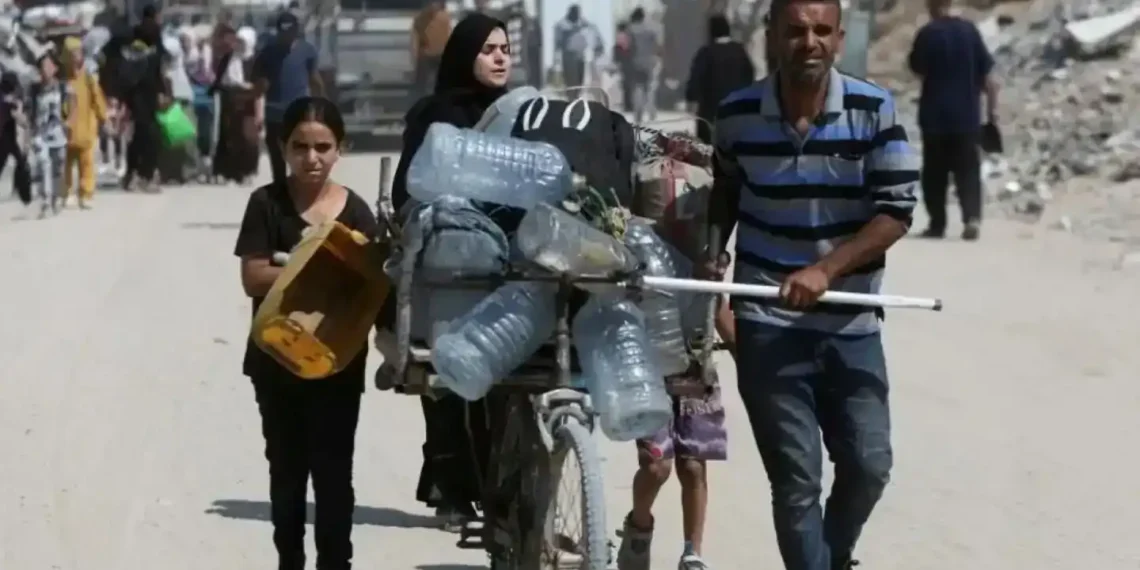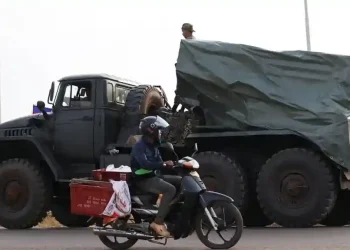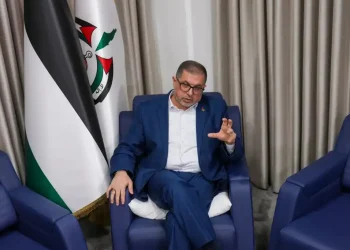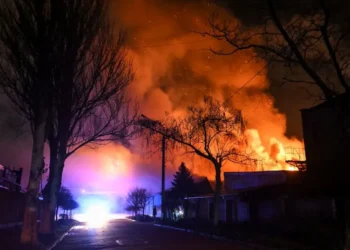Aid Centers in Gaza Shut Down Amid Violence, Confusion, and Mounting Casualties
Gaza — Humanitarian aid distribution in Gaza came to a grinding halt on Wednesday as all centers were closed for the day, following a string of deadly incidents near aid routes and a warning from the Israeli military that roads to these locations would now be treated as “combat zones.”
The closures come after 27 Palestinians were reportedly killed overnight near a distribution site — the third fatal incident in as many days. Witnesses and medics on the ground described the scene as “total carnage,” with many of the wounded suffering gunshot injuries. One foreign medic said hospitals were overwhelmed by the number of casualties.
Aid in the Crosshairs
The distribution network at the center of this crisis is the Gaza Humanitarian Foundation (GHF) — a controversial, U.S. and Israeli-backed initiative launched just last week to replace the UN-led aid system. On Tuesday, GHF said it would suspend operations temporarily for “organizational and efficiency improvements.”
Meanwhile, the Israel Defense Forces (IDF) issued a statement prohibiting access to the centers and the roads leading to them, declaring these routes active combat zones. The IDF claims it fired upon individuals who allegedly “deviated from designated access routes.”
But accounts from Gaza paint a darker picture. According to the Hamas-run Civil Defence Agency, civilians were fired on by tanks, drones, and helicopters near aid points. Medical officials in Khan Younis reported civilians shot while “waiting for food” in the western Rafah region.
Mounting Criticism from the UN and Aid Workers
The events have triggered widespread condemnation and calls for accountability. UN Secretary-General António Guterres has demanded an “immediate and independent investigation.” His spokesperson, Stéphane Dujarric, criticized the GHF model as dangerous, citing “a lack of transparency” and the presence of armed, unaccountable men at distribution points.
“This is a demonstration of how not to do humanitarian aid,” Dujarric told the BBC.
“It puts people’s lives at risk and forces them to walk into militarized zones to receive basic food supplies.”
Aid Access Amid Starvation Crisis
The crisis comes as Gaza’s humanitarian situation worsens. The UN estimates over two million people are at risk of starvation, following an 11-week Israeli blockade on food and essential aid.
The GHF’s centralized model requires Gazans to travel long distances — often through dangerous territory — to retrieve 20kg aid boxes from a few sites controlled by Israeli forces and staffed by armed American contractors. Critics argue the model is not only impractical but life-threatening.
Philippe Lazzarini, head of UNRWA, described the current aid system as a “death trap.”
Leadership Shake-up at GHF
In a notable development, Reverend Dr. Johnnie Moore, a prominent evangelical leader and ally of former U.S. President Donald Trump, was appointed as the new head of GHF on Tuesday. He replaces Jake Wood, a former U.S. Marine who resigned and publicly criticized the foundation’s approach.
The Bigger Picture: Ongoing War and Escalating Toll
This unfolds in the context of Israel’s ongoing war in Gaza, launched in response to Hamas’ October 7 attack that killed around 1,200 people and led to 251 hostages being taken.
Since then, Gaza’s Health Ministry reports at least 54,470 Palestinians killed, including 4,201 deaths since Israel resumed its offensive in March.
As the conflict rages on, so does the humanitarian collapse — with aid delivery, once a lifeline, now a dangerous gamble for Gaza’s exhausted and starving population.
This article was rewritten by JournosNews.com based on verified reporting from trusted sources. The content has been independently reviewed, fact-checked, and edited for accuracy, neutrality, tone, and global readability in accordance with Google News and AdSense standards.
All opinions, quotes, or statements from contributors, experts, or sourced organizations do not necessarily reflect the views of JournosNews.com. JournosNews.com maintains full editorial independence from any external funders, sponsors, or organizations.
Stay informed with JournosNews.com — your trusted source for verified global reporting and in-depth analysis. Follow us on Google News, BlueSky, and X for real-time updates.














